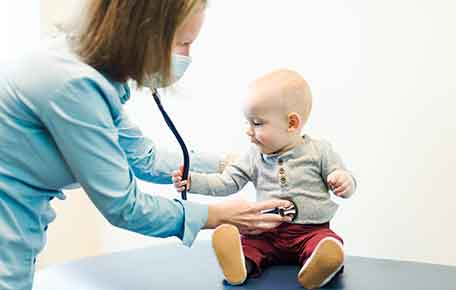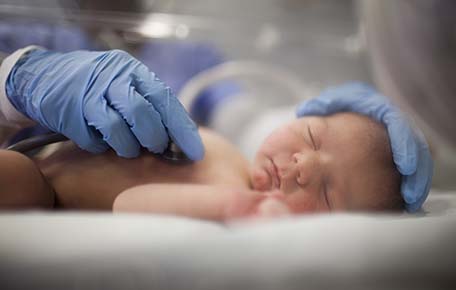Finding out your child has double aortic arch can answer some questions while bringing new ones. You might have thought your child had asthma or pneumonia. But now your doctor suspects a double aortic arch has kept your child from easily breathing, eating, and swallowing. Now you’re facing a lot of questions about what to do next.
At UVA Health Children’s, our congenital heart surgeons are experts in diagnosing and treating double aortic arch. This condition can be hard to detect. But we have the knowledge and offer all the tests needed to find out what’s behind your child’s symptoms.
If your child needs surgery, our surgeons have experience with even the most complex heart defects. At UVA Health Children’s, you’ll also receive the wrap-around support you need from the #1 children’s hospital in Virginia.
View our survival rates.
What Is Double Aortic Arch?
The aorta is the main artery that carries blood from the heart to the body. Normally, this single blood vessel comes up from the heart and then arches downward toward the body. Children with double aortic arch have an aorta that splits into two separate vessels. Both arch downward. Then they meet and merge into one blood vessel again.
The two arches can surround your child’s windpipe (trachea) and food pipe (esophagus). They can press down and put pressure on your child’s trachea and esophagus. This makes it hard for your child to breathe and eat.
Signs of double aortic arch include:
- Noisy or labored breathing
- Difficulty eating and swallowing
- Feeling like something is stuck in the throat
- Cough
Does Your Child Have Double Aortic Arch?
Double aortic arch can be hard to detect. You and your doctor may not have noticed your child’s condition at first. Or maybe they thought your child had another condition.
Knowing your child's exact condition helps direct the right treatment. At UVA Health Children's, we offer advanced imaging and tests including:
- Echocardiogram
- CT scan
- MRI
Our imaging experts specialize in radiology for children. We have technology sized for their tiny bodies. Learn more about our high-tech imaging services.
Double Aortic Arch Surgery at UVA Health Children's
If your child’s double aortic arch is putting too much pressure on their trachea and esophagus, we'll perform surgery. Our heart surgeons will cut the smaller of the two arches in half and stitch it closed. This takes the pressure off your child’s trachea and esophagus.
Usually, children’s symptoms get better quickly after surgery. Sometimes, the trachea needs some extra time to heal.


